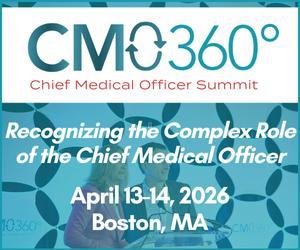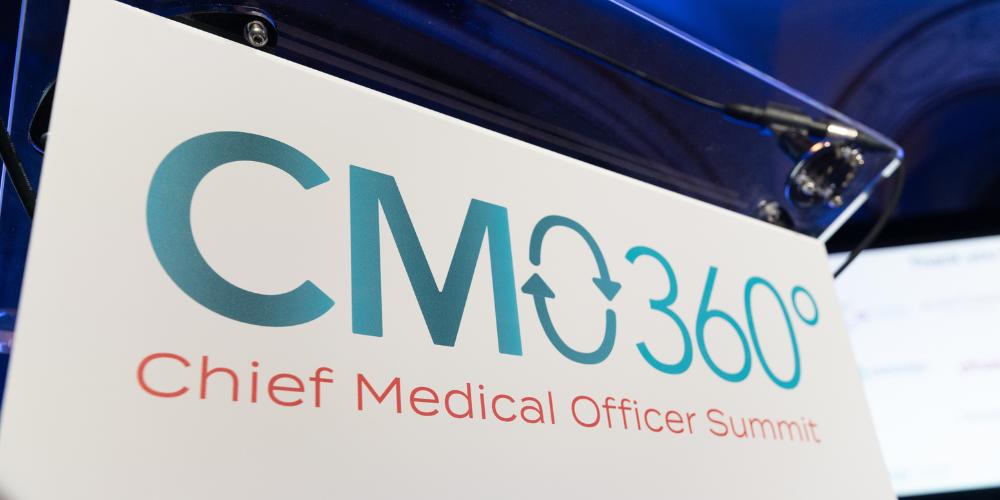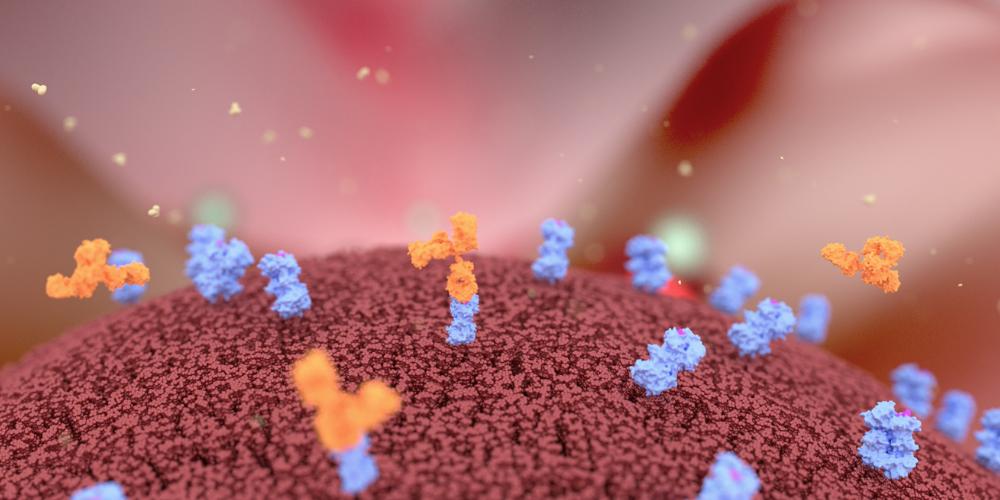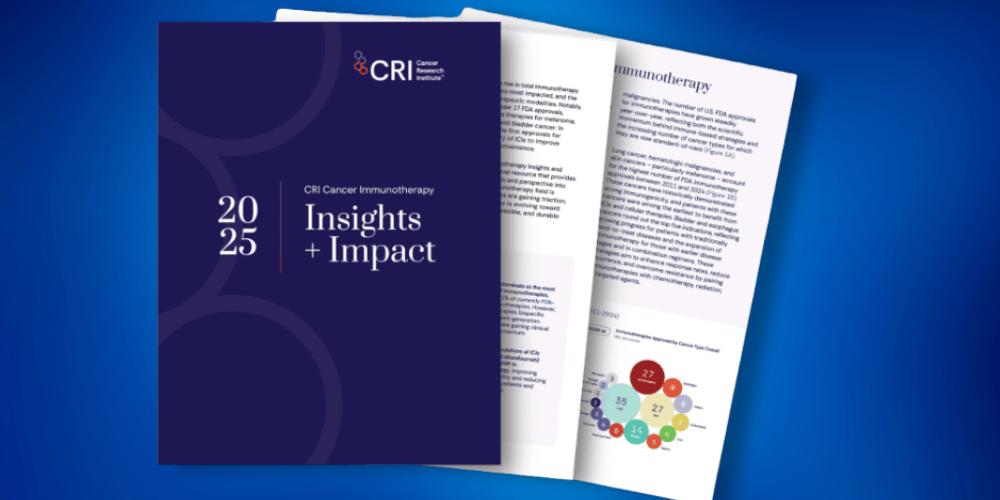Dr Roy Baynes on Strategy Development for Keytruda
Roy Baynes, MD, PhD, was instrumental in the development of pembrolizumab when he was CMO and Head of Clinical Development at Merck. In this Q&A, Dr Baynes sheds light on the strategy for developing pembrolizumab and how he’s translating that experience into his role at Eikon Therapeutics.

What is one lesson you learned from your time at Merck, specifically in developing Keytruda, that you’re bringing to the Eikon team?
Drug development is a team sport. You have to build a great team. You have to have executive level and board support. If you want to be successful, the company has to have commitment to moving it forward. Then, you have to chart a course, by leveraging any asymmetric knowledge advantage at your disposal, whether it be in teams, or technology, or area of medicine, to try to deliver results.
And finally, you have to focus on execution. None of what I said before matters if you can’t execute. It always has to be done within a rigorous framework of compliance. If you have a great drug, you have to develop it maximally. You have to build a wall of data, both for the benefit of patients and for the company.
How has your approach changed going from such a large company to a small one?
When you go into a smaller company environment, you have to make very smart decisions to leverage what will always be scarce resources to achieve a maximum multiplier effect. We’re hopeful that using conspicuous expertise can aid in that. The team we have put together is extraordinarily seasoned, and thus, together with our unique platform, we believe we have some asymmetric knowledge advantage. There is a tremendous amount of energy around this work, specifically around the platform, and the novelty of the science.
Having said that, it is well-recognized that a lot of what happens in drug development involves good fortune. You try to pick the best drugs and the best indications. As our CEO, Dr Roger Perlmutter, always says, “Fortune generally favors the prepared mind.” We hope that prepared minds can benefit from that. However, we’re operating in a different environment, and it’s critical to think strategically, but also recognize that you can't cut corners.
"If you do find success, it's important to build the wall of data. Unfortunately for some of the competitors, we were extremely successful at building that wall of data at Merck. Any organization after us had to either climb the wall or find a niche to squeeze through. The niches are not many, and the wall is high."
What were some of the keys to success in your strategy for Keytruda?
First, you have to work on active drugs. What’s happened in the IO space is that there has been a proliferation of drugs that looked important on paper, but didn’t pan out in the clinic. Active drugs generally exhibit single-agent activity. If a drug doesn’t have single-agent activity, trying to salvage it with combination therapy usually doesn’t play out well.
Patient selection is critical, especially for monotherapy or non-chemotherapy regimens. In Merck’s pembrolizumab program, we were well-served by using precision medicine to select patients we thought would do well. This allowed for focussed development, enhanced effect sizes and smaller clinical studies.
Then if you do find success, it's important to build the wall of data. Unfortunately for some of the competitors, we were extremely successful at building that wall of data at Merck. Any organization after us had to either climb the wall or find a niche to squeeze through. The niches are not many, and the wall is high.
What else do you think enabled the incredible success of Keytruda?
I want to emphasize the notion of the best teams. We were very fortunate in that with organizational commitment, we were able to bring in incredible functional, operational and clinical expertise. We were able to put together biostatisticians and programmers who were not only exceptional, but were also good at methodology and understanding how to maximize trial value. That helped a great deal to allow us to move quickly with high quality.
By bringing in a strong operational group, we were able to do the work internally as opposed to outsourcing. We had a high degree of control over the operational detail and delivered high quality data on time and on budget.
The Keytruda program started off as a 30-patient Phase I study, which ultimately grew to a 1,200 patient-adaptive cohort expansion study, which supported in record time accelerated approval of the melanoma and non-small cell lung cancer indications and the PDL-1 biomarker for non-small cell lung cancer patient selection. That's efficient drug development.
How did you build upon the success of the Phase I study?
The next key strategic element was designing well-thought-out screening Phase II basket trials to discern those tumors likely to benefit from a PD-1 blockade approach. One idea was that if the patient’s tumor had a lot of mutations, there would be neoantigens elaborated and that may predict response. Another idea was that if there was a significant amount of inflammation in the tumor, for example as evidenced by PD-L1 expression, it may also enrich the response.
We looked at 30 major cancers based on either mutations or PD-L1 staining; 25 of those gave positive readouts. We followed a creative playbook, to look for unambiguously large effect sizes in single-arm trials that would allow for accelerated approval, employ confirmatory trials, and then move proximal from advanced disease to earlier lines of treatment, essentially very early stages of cancer, such as the adjuvant and neoadjuvant setting.
"We followed a creative playbook, to look for unambiguously large effect sizes in single-arm trials that would allow for accelerated approval, employ confirmatory trials, and then move proximal from advanced disease to earlier lines of treatment."
What was your strategy for pursuing combinations?
Our overarching idea was that we only had a few drugs internally, versus many drugs existing externally. While many of the chemotherapy agents were readily accessible many classes of agents were not. To leverage the wealth of external agents, we created a very permissive collaboration environment. We had certain thresholds that a collaborator would have to meet, but provided they met those, we would make the drug available and they would carry the cost of doing the trial. The agreement was we shared the data.
As a result, we sat at the nexus of an enormous amount of information, which has allowed us to understand the combination world and move quickly on which combinations would be likely promising.
What are you concerned about for the current IO landscape?
It is possible that the strategies that worked so well for pembrolizumab may not be that easy to recapitulate. I believe that checkpoint inhibitors of the PD-1 variety have set quite a high standard. In addition we have now to be particularly attentive to the impact of the Inflation Reduction Act, where I do believe the model that we followed for pembrolizumab is going to be hard to recapitulate. In that case, we achieved an initial indication and then we built on it serially. That becomes quite difficult to do under the IRA. It’s not impossible, but it does mean that you've got to think a little differently about how you sequence things.
There are also external factors which are making the world more uncertain. Capital markets have gotten to be somewhat uncertain. In certain circles I think there is not a full appreciation that innovation is risky, that it's expensive and there's some idea that somehow you could get innovation and advances on the cheap, and that doesn't usually happen.
What other modalities or platforms are you enthusiastic about?
We’re seeing the next wave of major changes related to antibody-drug conjugates. Many of these are looking extremely promising. There are emerging data that ADCs are likely good combination partners with checkpoint inhibitors of the PD-1 class.
We have an interest in innate immunity. We have done many projects around innate immunity and many of the conventional targets in innate immunity have not played out so well. We are very intrigued by Toll Like Receptor (TLR) agonists, which I believe are powerful immune modulators. Their challenge is that they have been difficult to use, so it’s been important to thread the needle on dose and schedule to be tolerable when administered systemically.
"We sat at the nexus of an enormous amount of information, which has allowed us to understand the combination world and move quickly on which combinations would be likely promising."
Do you believe there are novel treatment mechanisms coming forward?
I do; I’ve mentioned systemically administered TLR agonists. Personalized Cancer Vaccines utilizing lipid nanoparticle encapsulated RNA based upon AI evaluated mutational profiles as has been reported by Merck and Moderna look very promising. I’m quite involved in a little company working on GDF-15, where there's interesting data to suggest that this might be a valuable target.
If I were to predict what the next big wave after ADCs and personalized cancer vaccines is likely to be, I do think that precision medicine revisited is going to be really important. I do believe platforms such as Eikon’s super-resolution microscopy platform for studying protein dynamics in live cells may be quite informative around precision medicine.
What is Eikon Therapeutics aiming to accomplish?
Eikon was founded on the idea that we could invent new drugs through the purposeful integration of science and engineering. It’s predicated on the Nobel Prize-winning work of Dr Eric Betzig, who received the Nobel Prize in 2014 for a discipline known as super-resolution microscopy.
That technology allows us to look at the movement of proteins in live cells. Every couple of days we're generating a petabyte of data, and we’ve developed the analytics to be able to understand these data. We've applied these data to some thorny biologic questions to identify drugs for important targets that have been hard to address, to understand many aspects of biology, to be able to screen for new compounds in a non-structurally enabled way and to understand at a very fundamental level how the cell operates.
What has been your focus as CMO?
In very short order, in my role as CMO, I've built out a clinical development team. The company had never operated in the regulated space before, so we had to put in place all of the people, tools, systems and infrastructure to allow for operation within the regulated environments. We have used in-licensing to bring in clinical stage assets so that we can prime the pump. We're building the development organization around clinical stage assets. The ultimate goal is to be ready to move our own organic molecules very quickly as they come into the clinic.
The pipeline spans immuno-oncology, oncology, immunology and potentially neuroscience. Our organic programs that have moved most rapidly have been in the space of DNA repair and hormone receptor biology and some of these are already in lead optimization and moving towards IND.









